Fuzz boxes in the 1960s weren’t significantly cheaper than they are in modern times. The price of the original Sola Sound Tone Bender (£14 in 1965) was nearly as much as the average weekly wage for men in the UK.1 Prices of commercial fuzz boxes soon went down, but apparently there was still enough interest by electronics enthusiasts that a number of fuzz box projects were published in British magazines, from the 1960s until at least the 1980s.
The Internet has made it much easier for hobbyists to put together their own guitar effects units, but even when the fuzz effect was still a novelty, resources quickly became available to help aspiring stompbox builders craft their own versions.
Two different fuzz box projects were published in the popular Practical Electronics magazine, in 1966 and in 1967. While it is unknown whether either of these fuzz circuits ever made it to a professional recording, the P. E. publication was widespread enough that it’s a safe bet that quite a few would have been built in the United Kingdom.
The images on this page come courtesy of the World Radio History archive, which hosts an enormous digital library of magazines, newspapers & books relating to music, radio, television & general electronics. A directory to similar guitar-related electronics projects, spanning from the 1960s through to the present day (including a large number of non-British publications) can be found at the freestompboxes.org Davidoff Library.
Practical Electronics: July 1966
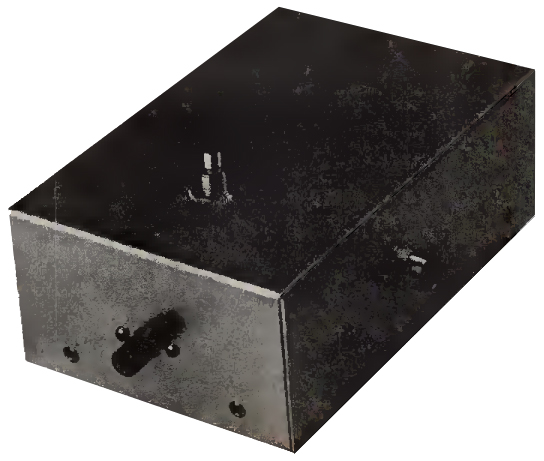
Published in the July 1966 issue of Practical Electronics, M. Scibor-Rylski’s fuzz box was a four-transistor design, which was intended to be built on stripboard.
The basic design features only a volume control, as well as a toggle switch in order to engage & bypass the effect. Optionally, Scibor-Rylski suggests incorporating a tone filter control to tame the unit’s “wildness”.

Equipped with a diode and four transistors, the 1966 Practical Electronics Fuzz Box was quite sophisticated compared with its contemporaries. The topology is unlike any other known fuzz box from the time.
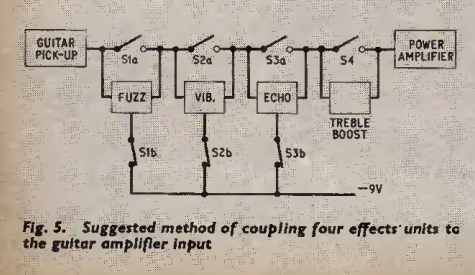
This diagram demonstrates Scibor-Rylski’s awareness of the importance of placing different guitar effects units in the correct order, in a signal chain. It was highly unusual, at the time, for a guitar player to connect multiple different effects together like this, and it predates the widespread use of pedal boards by a considerable margin.
Full issue viewable at: https://worldradiohistory.com/UK/Practical-Electronics/60s/Practical-Electronics-1966-07.pdf
Practical Electronics: November 1967
Practical Electronics had a space at the Radio Society of Great Britain exhibition, held from the 27th to the 30th of September, 1967,2 where two gold-coloured fuzz boxes were reportedly demonstrated.3
It’s possible that these two gold-coloured units related to the hobbyist’s project, in the November 1967 issue of Practical Electronics, which was produced by A. J. Bassett, and was published around the same time. The five-page tutorial explains, with the help of schematics & illustrations, how to build a three-transistor fuzz box.
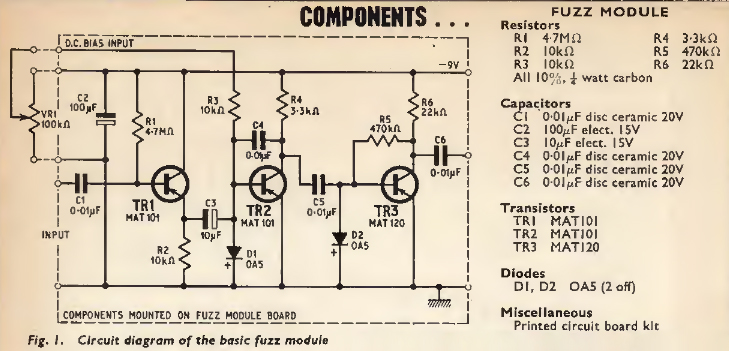
Bassett’s ‘simple’ fuzz box project is a three-transistor design, based on the (Gibson) Maestro Fuzz-Tone, and features only one control knob, and a toggle switch.
The single 100k Ω potentiometer biases the circuit, and the toggle switch eliminates the 4.7M Ω limiting resistor, for extra volume. An ‘advanced’ version of the same model incorporates a variable volume control, as well as a secondary boost toggle.
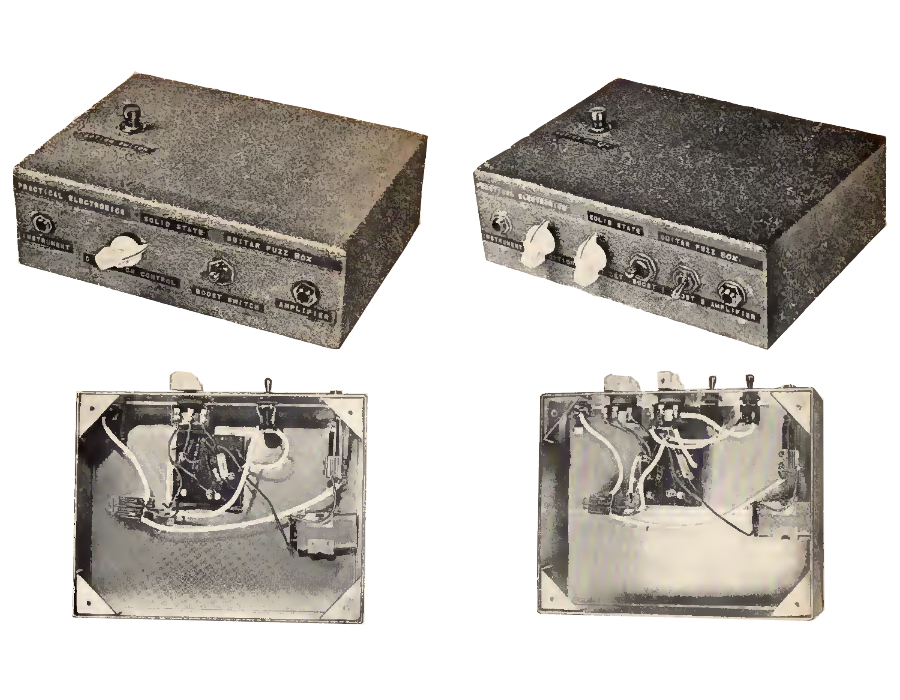
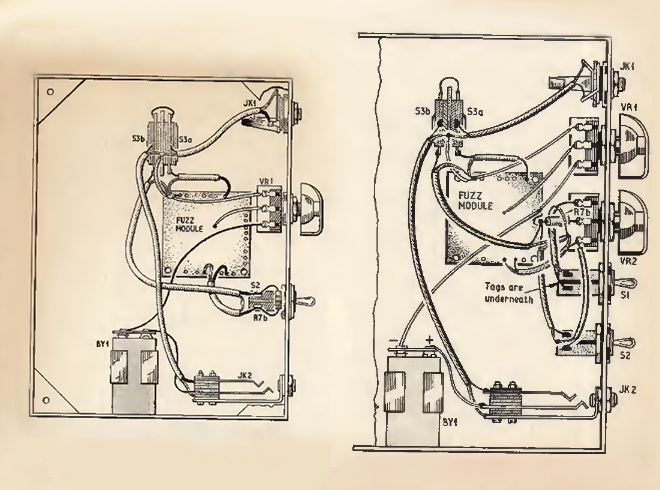
The 1967 Practical Electronics fuzz box features a double-pole/double-throw footswitch, and the supplementary text explains that the wiring arrangement is such that the straight guitar signal isn’t “attenuated” and “interfered with” as on other early fuzz box designs.
This is not the first time that a fuzz box was set up with this sort of footswitch wiring, but the article, itself, is one of the very earliest references to the ‘true bypass’ phenomenon that has since become a significant point of discussion with regards to modern-day guitar effects pedals.
Full issue viewable at: https://worldradiohistory.com/UK/Practical-Electronics/60s/Practical-Electronics-1967-11.pdf
